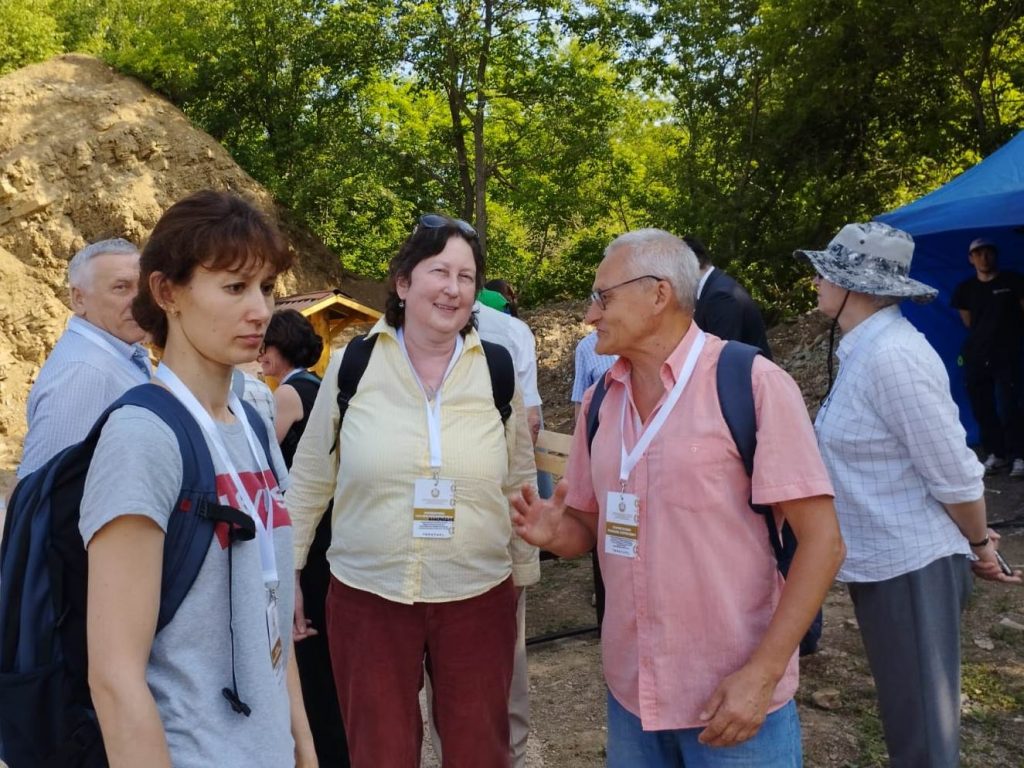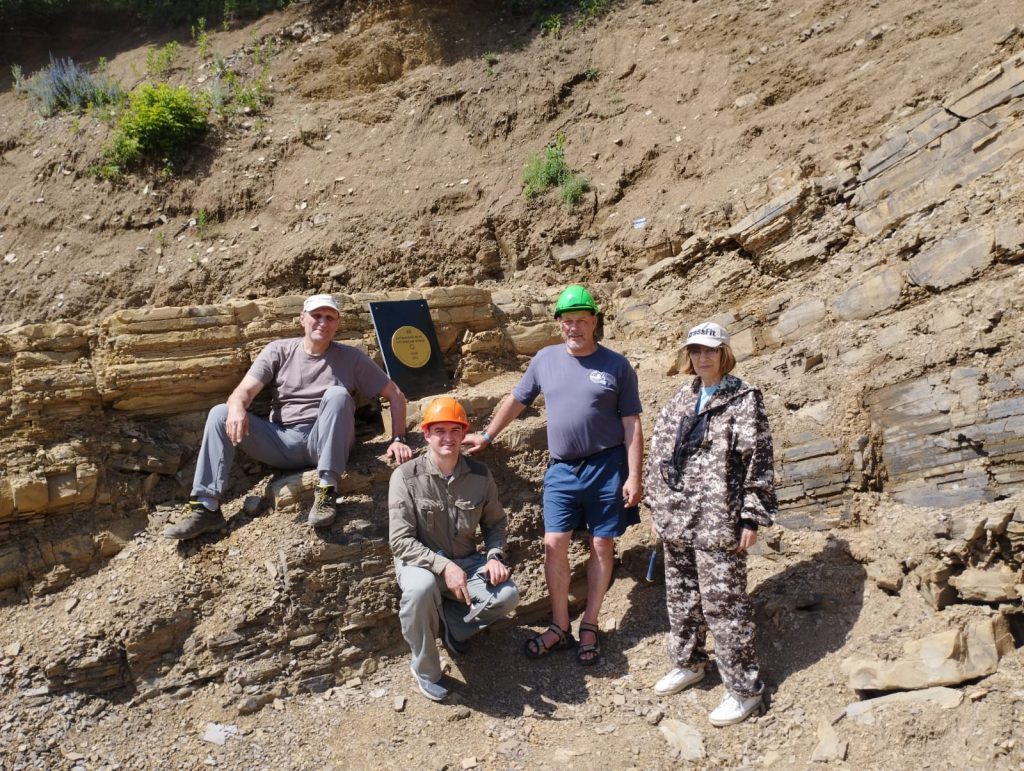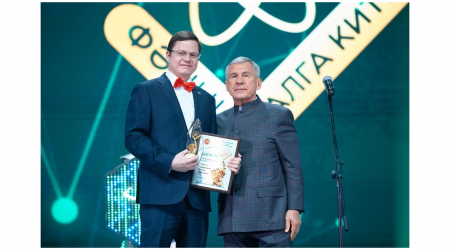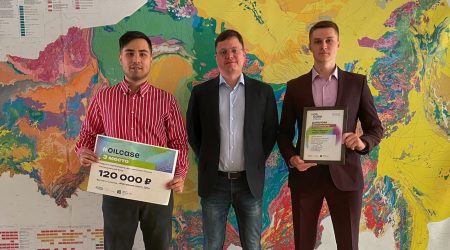IGPT employees Rafael Sungatullin and Guzal Sungatullina receive certificates of merit from the Republic of Bashkortostan
The scientists made a significant contribution to the study of the first in the Russian Federation Global Boundary Stratotype Sections and Points “Usolka” (age 294 million years) and “Dalniy Tyulkas” (290 million years), the so-called “golden spikes”.
The family team of scholars devoted several years to the study of these unique geological objects located in Bashkortostan. The results of their scientific work, which they carried out together with other Russian researchers, are presented in numerous papers published in Russian and foreign journals.
As is known, from a geological point of view, the history of the Earth, which is 4.5 billion years old, is divided into certain periods. They are marked on the International Stratigraphic Scale.
“Reference sections are used to mark the lower boundaries of the stages of the International Stratigraphic Scale. The procedure for selecting them and establishing the boundaries of the stages is determined by the GSSP (Global Stratotype Section and Point) concept. Such reference sections are called golden spikes – by analogy with the tradition in the American railway industry, where such a spike was installed to mark the completion of the transcontinental railroad. In the stratigraphic scale, the golden spike serves as a kind of a bridge between its stages,” explains Rafael Sungatullin, Chair of the Department of Regional Geology and Minerals.
Guzal Sungatullina adds that the golden splkes not only mark the lower boundaries of the stages, but also serve as starting points for new stages in the Earth’s history.
“Each GSSP has its own boundary marker, most often these are groups of fauna or flora. Thus, in the Usolka and Dalniy Tyulkas sections, the role of biomarkers is played by conodont species, according to the appearance of which the boundaries of the stages are drawn,” says the Associate Professor of the Department of Paleontology and Stratigraphy.
In order to receive the status of a golden spike, a section must meet certain criteria.
“The main requirements are as follows: no breaks in sedimentation; marine origin of rocks; the presence of a variety of ancient fossils. In addition, the rocks must be suitable for magneto-stratigraphic and chemo-stratigraphic studies, as well as absolute dating. The section should be accessible for visiting, preferably protected and have a presentable appearance,” explains Dr Sungatullina.
According to representatives of the Institute of Geology and Geochemistry of the Ural Branch of the Russian Academy of Sciences (Yekaterinburg), work on studying the Usolka and Dalniy Tyulkas geological sections was started in the 1980s by their employees.
“The sections gained worldwide fame after a field excursion for participants of the International Congress on the Permian System in 1991,” says Guzal Sungatullina. “Over the next 20 years, systematic studies of the sections were conducted by both Russian and foreign geologists. And in 2015, as candidates for the role of GSSPs, the sections were presented to participants of the field excursion of the International Geological Congress on Carboniferous and Permian, which was then held at Kazan Federal University. Following the trip, the Permian international subcommittee voiced the shortcomings of the sections that needed to be deal with. The main complaint was the unpresentable appearance, since one of the requirements for GSSP is their accessibility and developed infrastructure. The sections also needed additional study using new research methods included in the requirements for GSSP.”
A group of geologists from different cities of Russia was recruited, which included two scientists from the Institute of Geology and Petroleum Technologies of Kazan Federal University.
“Over three years, the sections were additionally studied, cleared and included in the Toratau Geoloigcal Park. On July 21, 2018, the Usolka section became the golden spike of the Sakmarian stage of the Permian system of the International Stratigraphic Scale. And the Dalniy Tyulkas section received the status of the golden spike of the Artinskian stage of the Permian on January 26, 2022,” Rafael Sungatullin informs.
After this, the final stage of the preparation of the sections began. These works were supervised by the leadership of the Republic of Bashkortostan, the employees of the Toratau Geological Park and the Gafuriysky District Administration, as well as the Sungatullins.
In June 2025, an official public ceremony of installing the first golden spikes in Russia took place at the Usolka and Dalniy Tyulkas sections.
“The rocks of the Usolka and Dalniy Tyulkas contain a rich complex of various macro- and microfossils – conodonts, foraminifers, ammonoids, ostracods, brachiopods, fish, crinoids, radiolarians, trilobites, calamites, and calcareous algae. All of this is of interest for the development of geological tourism and educational activities,” Guzal Sungatullina emphasizes. “In addition, the open-pit mines have become training grounds for students of geological universities.”
There are several more GSSP candidates in our country, geologists say, and all of them are located in the Republic of Bashkortostan.
The Usolka section is a candidate for the golden spike of the Kasimov (307 million years) and Gzhel (303.7 million years) stages of the Carboniferous system.
“In addition, in this section it is possible to establish the so-called “silver spike” of the lower boundary of the Asselian stage of the Permian. The silver spike is a duplicate section of the standard,” Dr Sungatullin specifies.
The geologist reports that in early July 2025, samples were collected for paleontological and lithogeochemical studies of the Carboniferous and Asselian deposits of the Usolka section. Work on establishing new spikes is ongoing, and our researchers are partaking.
“The candidate for the golden spike of the lower boundary of the Kungurian stage of the Permian system is the Mechetlino section, the candidate for the golden spike of the lower boundary of the Moscovian stage of the Carboniferous system is the Basu section, and the candidate for the golden spike of the lower boundary of the Visean stage of the Carboniferous is the Verkhnyaya Kardailovka section,” concludes Rafael Sungatullin.










